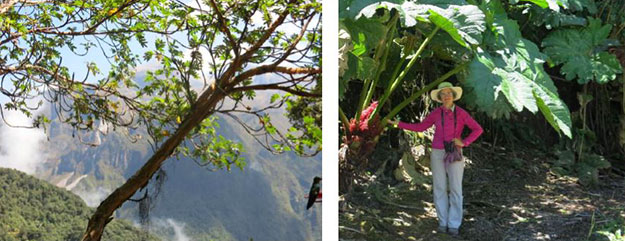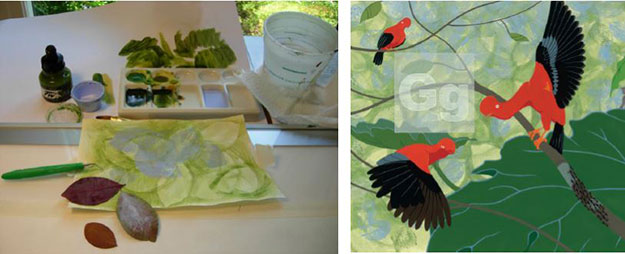Lulu Delacre

Strengthen your child’s powers of observation and imagination when you spend time together outdoors. You can find nature in a variety of settings within your community, giving children the opportunity to explore by touching, smelling, and examining things to make their own discoveries.
Lulu Delacre, award-winning bilingual author and illustrator of children's books, offers engaging ideas to inspire children and their families to make artistic connections with the natural world.
August 15, 2017
As part of the research for my book ¡Olinguito, de la A a la Z! Olinguito, from A to Z! I traveled to the cloud forest high in the western Andes of Ecuador. I took long hikes deep into this amazing ecosystem that brims with endemic species of flora and fauna. On each hike I took my camera, sketchpad and pen, as I explored the forest and recorded my findings. I listened to the birds, smelled the flowers, and photographed animals and plants. I collected leaves and flowers which I stored between the pages of my sketchbook.

I saw firsthand the importance of the interconnectedness between the species and returned from my trip with great respect for what these ecosystems mean for humans and the Earth.
Back in the studio I shared a bit of the cloud forest with my readers in the artwork I created for the book. I based the illustrations on the photos and notes I took. I created background patterns by inking the pressed leaves I had collected and stamping them on paper, and I collaged real pressed leaves and flowers into the art.

Observe an ecosystem
You will need:
- a notebook
- a pen or pencil
- a camera
- a thick, old paperback book
- Make a note of the time of day you are making your observations. Is it morning, afternoon, or night?
- Record all the plants and organisms you see, including trees, shrubs, bushes, grasses, ferns, mosses, and lichens.
- Record all the animals you see in the area, including insects, arachnids, mollusks, reptiles, birds, and mammals.
- Gather fresh leaves of different shapes from trees and shrubs and put each separately between two pages of the paperback book. You may also gather small, colorful flowers or flower petals and put them between pages of the book.
- Take photos of any animals you see.
- Once you are back inside, place the paperback book under a pile of heavy books for a week or two to let your pressed leaves and flowers dry.
Illustrate the ecosystem
You will need:
- smooth, thick white paper
- smooth, thin white paper
- your dried, pressed leaves and flowers
- acrylic paints or color ink scissors
- round and flat paint brushes glue
- On the thick paper, sketch a simple scene showing a small area of your backyard or the park. Use your notes and photos as reference for what to show in your picture.
- For your picture, think about where you want a leaf-print background and where you will draw or paste pictures of the animals you saw.
- Create a leaf print background by dipping a flat dry brush in a little paint and applying the paint to one of your dried leaves. Take the painted leaf, press it on your thin paper over and over again to create a pattern.
- Once the paint on your leaf print background is dry, cut it into any shape you want and paste it onto your picture.
- Add your own drawings or collages of the trees, shrubs, and animals you saw.
- Finish your picture by adding some of your pressed leaves and/or flowers. Use very little glue to paste the pressed leaves and flowers because they are delicate and brittle. Have fun as you learn about your natural surroundings by observing and creating!



